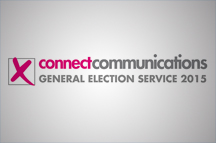 As the longest election campaign in UK political history finally draws to a close it is hard to remember a time when there was not an election underway. The Fixed-Term Parliaments Act 2015 set today as the date for polling day on 15 September 2011. And, despite every effort on the party of the leaders of the three largest parties in Westminster, the polls have been stuck since about June of last year. The six weeks of the short campaign have been no different: no breakthrough moment, no earth-shattering policy, no defining moment. So, with one day until the real campaign kicks off – the one that happens beyond the doors of the Cabinet Offices and in the House of Commons Committee Corridor – what will be remembered from the May 2015 general election campaign?
As the longest election campaign in UK political history finally draws to a close it is hard to remember a time when there was not an election underway. The Fixed-Term Parliaments Act 2015 set today as the date for polling day on 15 September 2011. And, despite every effort on the party of the leaders of the three largest parties in Westminster, the polls have been stuck since about June of last year. The six weeks of the short campaign have been no different: no breakthrough moment, no earth-shattering policy, no defining moment. So, with one day until the real campaign kicks off – the one that happens beyond the doors of the Cabinet Offices and in the House of Commons Committee Corridor – what will be remembered from the May 2015 general election campaign?
Firstly it will be remembered that the polls could only tell us half the story. The polls have been remarkably consistent, so if they are wrong then they are all wrong. And even if the polls are right, no one knows what will happen next. This will be remembered as an election in which the numbers game was compelling and confusing in equal measure.

Secondly this will be remembered as the election when the UK’s two party system looked unsustainable. Four years ago the public resoundingly rejected a version of proportional representation, only to find that in 2015 Conservatives and Labour pundits openly musing on the potential benefits of electoral reform. The emergence of new characters and new parties might have added a bit of colour to this election but it has not made the choice any clearer. Perhaps the minor parties will shrink back but the predicted dominance of the SNP in Scotland makes that a creative prediction. Just as consumers crave choice, creating new market entrants which challenge such established brands as Tesco or the London Taxi, the voter is no longer limited to one or other or, at a push, that lot. The inadequacies of our voting system have been laid bare. If first-past-the-post has had its day then it will be remembered that this election was its death knell.
Finally this was the selfie election – the election in which the smart phone and social media replaced the hard copy manifesto and the political poster. David Cameron has predicted the demise of the selfie, telling The Spectator: “It is an extraordinary phenomenon and it sometimes makes part of the process of politics quite difficult. Everyone wants a selfie rather than to have a conversation, and sometimes that’s a bit frustrating…” But whatever the Prime Minister’s annoyance he knows better than not to oblige the selfie-seeking voter. And when voters are not posing with well-known candidates, creating celebrities out of career politicians, they are following the campaign on Twitter. The lifespan of an unphotoshopped campaign image is shorter than Natalie Bennett’s dramatic pauses. Only in some highly contested seats are the electorate taking a mallet to a stake and openly backing their candidates – far easier to tweet one’s followers. For party headquarters the power of the social media was unleashed in 2015; 2010 was the first online election, 2015 the first election when social media dominated.
If the Fixed-Term Parliament Act is not repealed, then in 261 weeks’ time we will be back at the polls again. As predictions are in vogue, here are ours: the UK voting system will be under serious consideration; the pollsters will not have recovered from the shock of the results on May 8 2015; and Boris will be posing for selfies.












